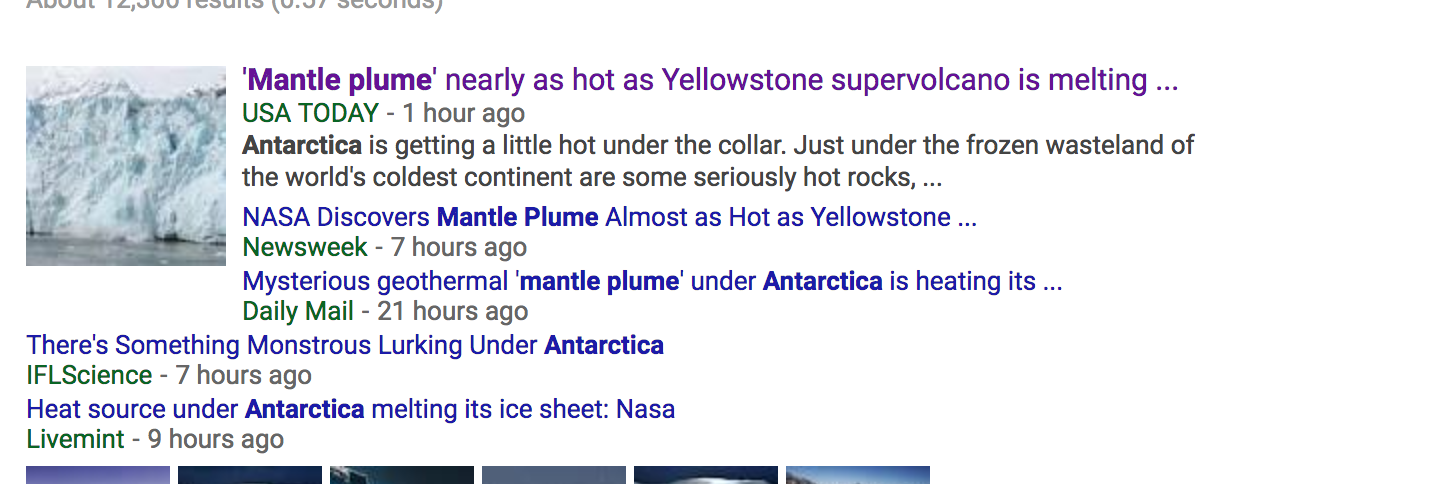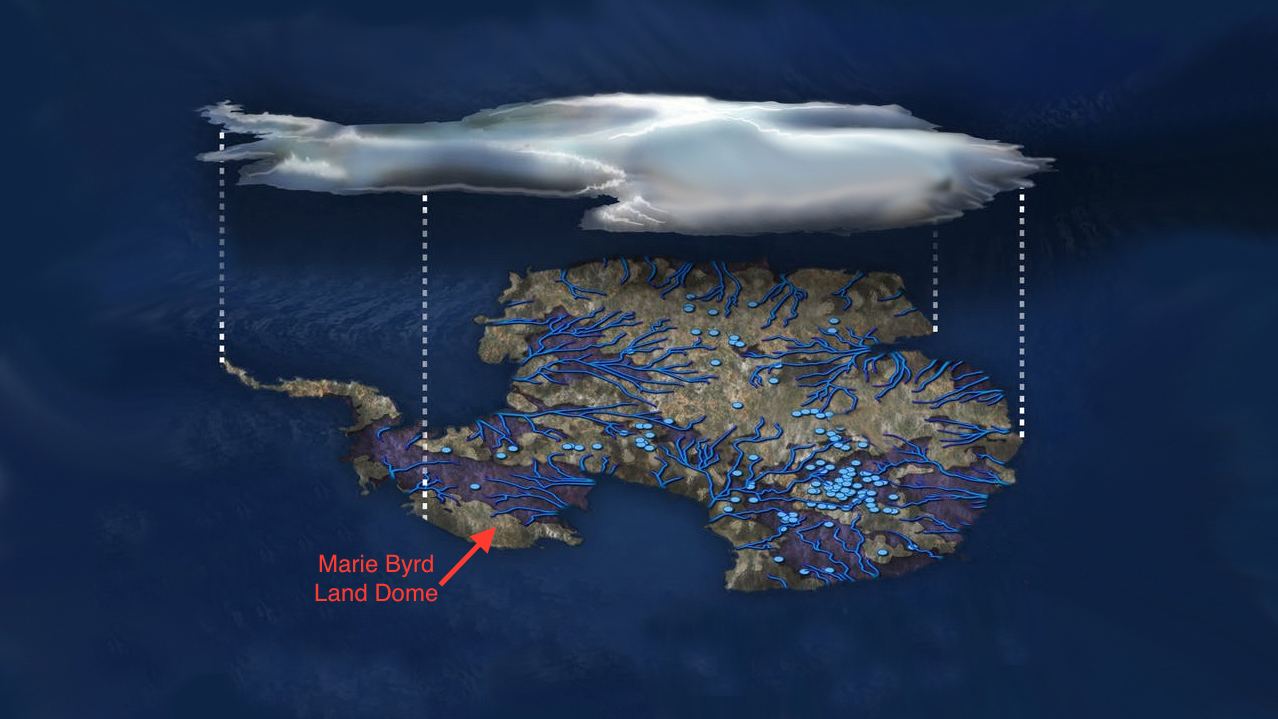Three decades ago, scientists began to study the possibility that there was a plume of hot rock coming up from the mantle, heating parts of Western Antarctica. Back in September, researchers published results of a model showing how such a plume might affect the Antarctic ice sheet.
Image; NASA/Jim Yungel/Flickr
Today, these headlines started to appear:

Image: Screenshot
And my brain felt like it started to leak out of my ears. So we’re going to present to you what actually happened, what we know about the plume, and why you shouldn’t worry about “something monstrous”.
It’s definitely a neat idea from a scientific perspective. “I was interested because my first impression was that it’s surprising,” Hélène Seroussi, scientist at NASA’s Jet Propulsion Laboratory told Gizmodo. “There’s this feature under the ice and we still have ice present there. It was interesting to reconcile these two things that were contradictory in the first place.”
Seroussi and her group then tried to build a model of what would happen if a mantle plume did exist there and see what such a plume’s effects on the ice sheet and heating in the ice might be. This model, aided by observations from a NASA satellite, helped explain the amount of heat such a plume might add. It could even melt several centimetres of ice right above, and explain some of the heat creating Antarctica’s hidden lakes and rivers. The researchers published the model in the Journal of Geophysical Research: Solid Earth.

Image: NSF/Zina Deretsky
The plume would have been there for around 50 million years, and the ice sheet would have formed atop it. It likely affected the way ice melted at the end of the last Ice Age. But it isn’t really something to worry about. “It’s been there forever, it will remain there for a really long time,” said Seroussi. “We don’t have to worry about it. But at the same time, as the future brings more heat… the ice will probably be warmer in this area than in other places.”
The presence and modelling of such heating is important data to have to understand the future of the Antarctic ice sheet. After all, warm ice flows faster than colder ice, like warm honey flows faster than cold honey.
But no one has actually measured a plume. There’s just a new model to help explain a hypothesis. A research associate from the University of Texas, Duncan Young, explained to Gizmodo that the paper “is a valuable use of the advances in ice sheet modelling” integrating the sensitivity of the ice sheet into it. He points out that there’s more up-to-date-data that can be added, including satellite observations. Seroussi also told Gizmodo that more direct observations could help explain what was happening.
So there you have it, dear readers. I was in the midst of reporting this interesting but maybe not so revolutionary paper about a geophysical model and suddenly a bunch of other people saw the press release, didn’t bother to read the paper, then went insane and decided that scientists made a huge discovery. That isn’t what happened. But, uh, the model is cool.
